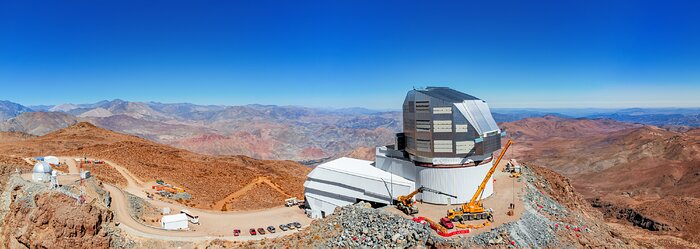Constructing a Legacy
Underneath the clear blue sky of Cerro Pachón ridge in Chile, construction continues on Vera C. Rubin Observatory, a Program of NSF’s NOIRLab. The 8.4-meter telescope is equipped with a 3.2-gigapixel camera — the world’s largest digital camera ever fabricated for optical astronomy — and is expected to see first light at the end of 2024. It will conduct an unprecedented, decade-long survey of the optical sky called the Legacy Survey of Space and Time (LSST). This survey will aim to capture nearly 1000 images of the sky every night. The observations will detect 10 million changes in the sky per night and over the survey’s ten-year timeline they will produce a 15-petabyte catalog database. Dedicated computer facilities will process Rubin Observatory data in real time, issuing worldwide public alerts within 60 seconds of any detected changes in the sky. This massive amount of astronomical data will be a game-changing resource for astronomers, and will offer tools and activities for formal educators, citizen scientists, informal science centers, and the general public to engage, explore, and discover.
This aerial drone photo was taken as part of the recent NOIRLab 2022 Photo Expedition to all the NOIRLab sites.
Credit:Rubin Observatory/NOIRLab/NSF/AURA/T. Matsopoulos
About the Image
| Id: | iotw2329a |
| Type: | Photographic |
| Release date: | July 19, 2023, noon |
| Size: | 7255 x 2582 px |
About the Object
| Category: | Vera C. Rubin Observatory |
